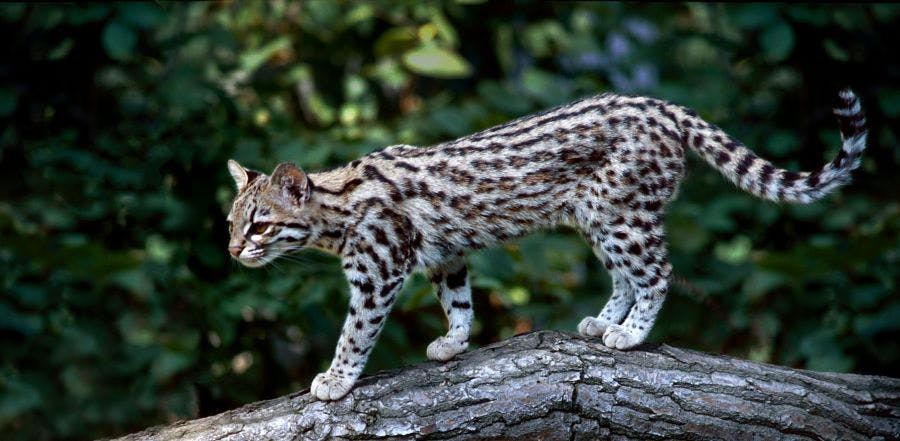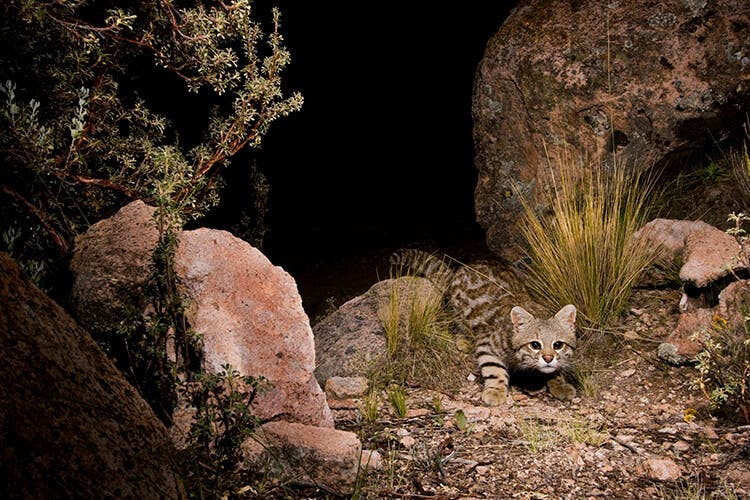small wild cats
Tigrinas, Fishing Cats, Manuls, Oh my!
There are seven species of big cats—like lions, tigers, jaguars and cheetahs, but big cats are outnumbered by 33 small wild cats. In fact, small cats are far more diverse than big cats. No big cats make a living catching fish like the Fishing Cat, and no big cats live in trees like the Margay and Marbled Cat. Small wild cats make the family of cats far more interesting and they need to be protected.
There are conservation and monitoring programs for all 17 subspecies of big cats. By contrast, only three species of small cats have dedicated threat-reduction programs throughout their geographic ranges. And while some small cats have adapted to their changing environments, many species are considered Vulnerable or Endangered. In fact, the rarest cat in the world, the Iberian Lynx, has a total population of less than 1,000. Fortunately, the European Union is committed to rewilding the Iberian Lynx. The most threatened cat in the world is the Flat-headed cat in Southeast Asia.
The tendency to support conservation efforts for big cats over small cats is reflected in the imbalance of funding. About 99% of all wild cat investment goes toward the big seven – with just 1.2% of funding going to the 33 small cat species.
Dr. Jim Sanderson, Re:wild’s Program Manager for Wild Cat Conservation, is the founder and director of the Small Wild Cat Conservation Foundation and a member of the IUCN Cat Specialist Group. He works to get small wild cats the conservation attention they deserve.
Sanderson orchestrates a worldwide network of local partners, each committed to protecting small wild cats and their habitats around the world.
Re:wild’s small wild cat conservation program:
Works with the Mohamed bin Zayed Species Conservation Fund to identify small wild cat conservation projects and provide them with small grants.
Supports 10 working groups to help the species most in need.
Provides camera trap software, training and expertise to survey populations of small wild cat species globally.
Works with local partners in range countries to establish ongoing threat reduction projects to conserve small wild cats and their habitats.
Makes recommendations and implementing projects to reduce threats to wild cats.
Brings awareness to the plight of endangered small wild cats to ensure the same level of attention and funding as large cats.
Species-based approach
To directly address the needs of specific small cats, some of which occur in near-isolation, Re:wild works with partners to develop threat reduction programs for individual species of small cats. Re:wild has programs to reduce threats, protect, and restore 10 species of small cats:
Fishing cats (Vulnerable) throughout their geographic range from Pakistan to Cambodia
The Tigrina (Vulnerable) in the Talamanca Mountains of Costa Rica and Panama
The Pampas Cat (Near Threatened) in South America
The Guiña (Ween-yah, Vulnerable) is the smallest felid in the Americas and is found solely in central and southern Chile, as well as southwestern Argentina
Manul (Near Threatened): Also known as Pallas’s cat, lives in the grasslands and montane steppe of Central Asia
African Golden Cat (Near Threatened), Africa’s rarest cat, found in the central African equatorial rain forest belt
Geoffroy’s Cat (Near Threatened), found in South America’s southern Cone from Southeast Brazil to Patagonia
Rusty-spotted Cat (Vulnerable); the world’s smallest cat literally half the size of a house cat, and the most secretive of the wild cats that lives in Sri Lanka, India, and Nepal
Clouded Leopard (Vulnerable), Asiatic golden cat (Near Threatened), and Marbled cat (Near Threatened) in mainland Asia. Re:Wid is the only organization that has active threat-reduction projects in several of its range countries
Northern & Southern Tiger-cats (both Vulnerable) in South America that have been largely neglected
Top photo: A Manul, one of the 33 species of small wild cats. (Photo courtesy of Ben Warren)


